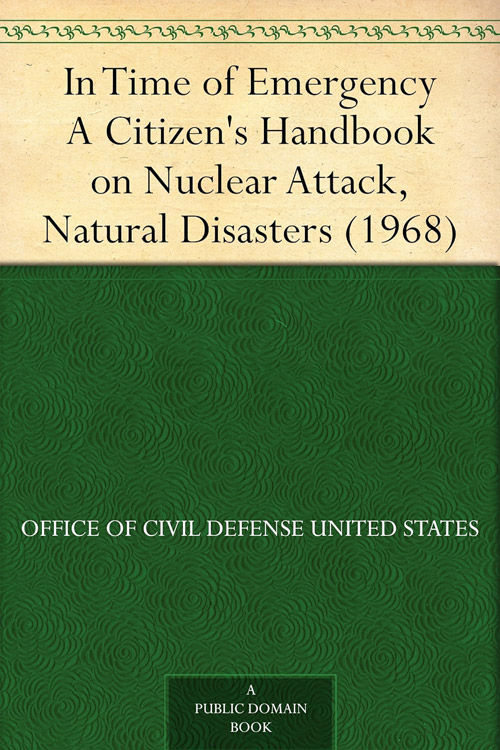
In Time of Emergency: A Citizen’s Handbook on Nuclear Attack, Natural Disasters
While these local government systems have been set up mainly as safeguards against nuclear attack, they have saved lives and relieved suffering in many major peacetime disasters. People have been warned of impending storms and similar dangers, told how to protect themselves, sheltered from the elements, fed and clothed, treated for injury and illness, and given help resuming their everyday lives. Experience has shown that as cities, counties, and towns develop systems to preserve life under nuclear attack conditions, they also become better prepared to deal effectively with peacetime disasters.
In cooperation with the U.S. Office of Civil Defense and the States, many local governments are improving their civil defence systems by preparing community shelter plans. These plans include instructions to local citizens on what to do during a nuclear attack. This handbook, “In Time of Emergency,” contains information on atomic attacks and major natural disasters. This general guidance supplements the specific instructions issued by local governments. Since special conditions may exist in some communities, the local instructions may differ slightly from this general guidance. In those cases, the local instructions should be followed.
Read or download Book
United States, Office of Civil Defense
United States civil defence refers to the use of civil defence in the history of the United States, which is the organized non-military effort to prepare Americans for military attacks and similarly disastrous events.
Biography.
Late in the 20th century, the term and practice of civil defence fell into disuse. Emergency management and homeland security replaced them. There is a little-known history of civil defence in the United States before the twentieth century. Since ancient times, cities typically built walls and moats to protect from invasion and commissioned patrols and watches to keep an eye out for danger. Still, such activities have not traditionally been encompassed by the term “civil defence.” The US lacked early civil defence efforts because it was seldom threatened with a significant attack. Nonetheless, there are some early examples of what would today be considered a civil defence. For example, as early as 1692, the village of Bedford, New York, kept on staff a drummer whose responsibility was to sound the town drum in the event of a Native American attack—a very early precursor to the wailing sirens of the Cold War.






